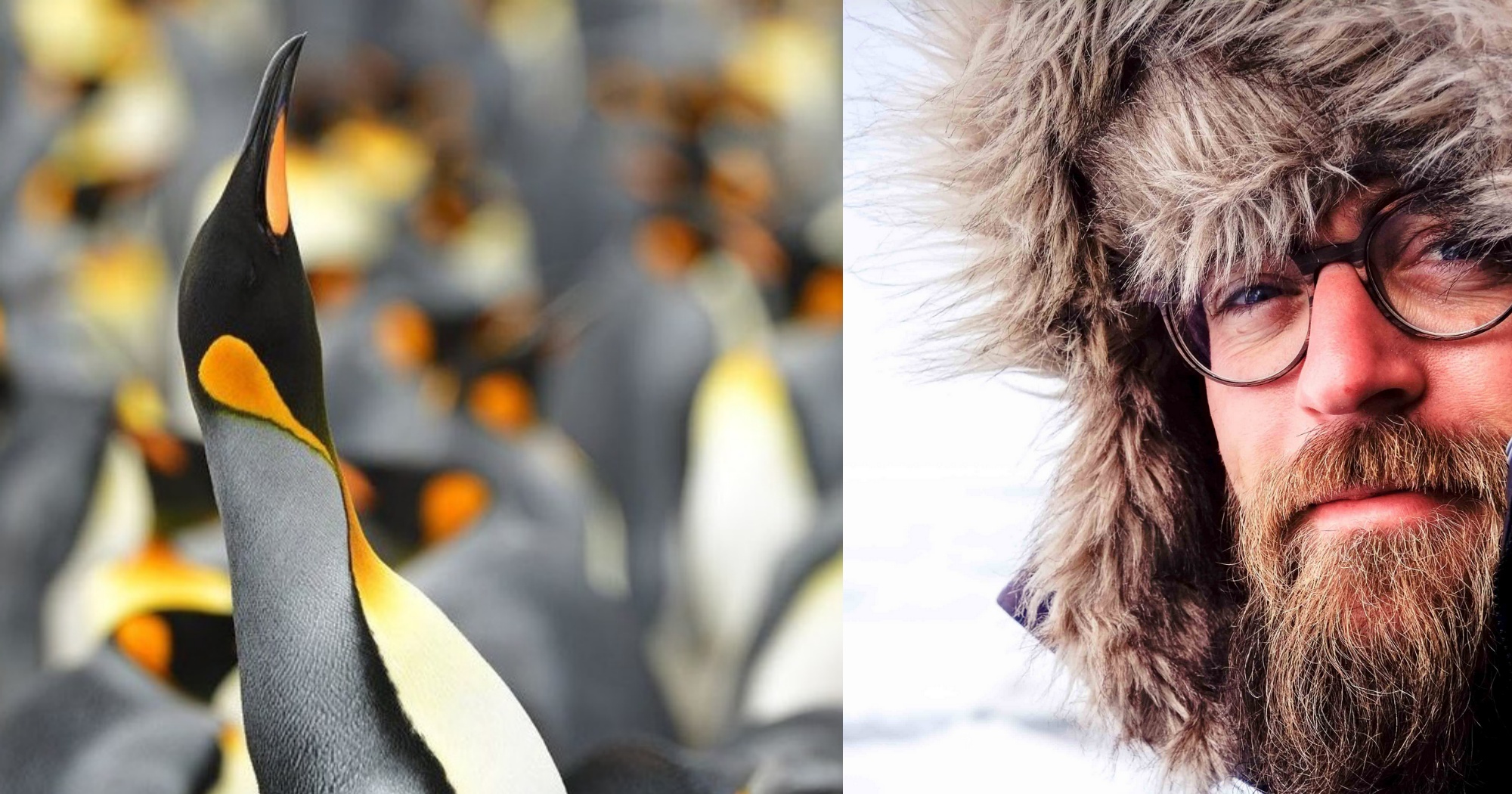Follow us on Telegram for the latest updates: https://t.me/mothershipsg
Resembling the iconic appearance of the emperor penguin, the king penguin is the second largest penguin species.
They are so common that you can also see them at the Jurong Bird Park.
However, a wildlife photographer has captured what is believed to be the first photograph of a rare pale king penguin with yellow markings near the Antarctica.
Yellow penguin
Belgian photographer Yves Adams literally struck gold when the strange-looking penguin "walked up straight" in his direction amidst the chaos of sea elephants and Antarctic fur seals and 120,000 other birds on the beach.
On Feb. 18, he shared his pictures on Instagram, which have amassed over 25,000 likes and over 1,000 comments at the time of writing.
Adams had embarked on a two-month expedition with a team to the Antarctica peninsula when they stopped on an island in South Georgia.
In an interview with the Guardian, Adams described the moment when he first noticed the penguin. He and his team was watching a particular group of penguins "swimming by, from left to right" which he followed "from the corner of my eye".
Upon noticing something yellow, the team "all went crazy" and "dropped all the safety equipment and grabbed our cameras", Adams told the Independent.
Adams said that his team was very because the bird landed right where they were, and their view wasn't blocked by the massive number of animals on the beach — which was typically the case.
Adams told the Guardian that the yellow penguin swam to shore, flicked water off its feathers and joined the rest of the king penguins in the colony.
The window of opportunity for Adam to capture these never-before-seen shots lasted less than a minute.
According to Adams, they were not able to walk through or disturb the animals on the beach or risk being "eaten alive by seals".
He also mentioned that they had "to work quickly, watching 360 degrees around" at all times and felt "lucky this bird decided to land where it did".
INO, not albino
His team initially assumed the colour mutation was caused by albinism but later realised that the condition may be something more complex after discussions with ecologists on the expedition.
Hein van Grouw, a curator at the UK Natural History Museum’s Department of Life Sciences, whom Adams' team had contacted said the penguin could be an "ino-bird" or a "similar mutation".
Grouw explained, its "melanin has decreased so much and has become lighter in colour" such that "you can see the yellow through it".
Andre Chiaradia, a research scientist from Phillip Island Nature Parks, shared his concerns about this penguin's chance of survival with the Guardian.
The lack of melanin results in weaker feathers that wear faster while shedding and regrowing at the same rate as regular king penguins and Chiaradia is unsure if "its feathers will hold on until the next moult".
Dark feathers also help king penguins to camouflage themselves in the water and catch fish easily but prey would be able to spot this penguin's pale feathers more easily, reducing the success rate of its hunt.
Adult king penguins typically have black and white feathers with a bright orange cheek patch and an orangey yellow upper chest.
 Photo by Wildlife Reserves Singapore.
Photo by Wildlife Reserves Singapore.
 Photo by Wildlife Reserves Singapore.
Photo by Wildlife Reserves Singapore.
Related
If you're interested to read more about discolouration in common birds, check out our previous article on a white myna.
Top images by Yves Adams.
If you like what you read, follow us on Facebook, Instagram, Twitter and Telegram to get the latest updates.

